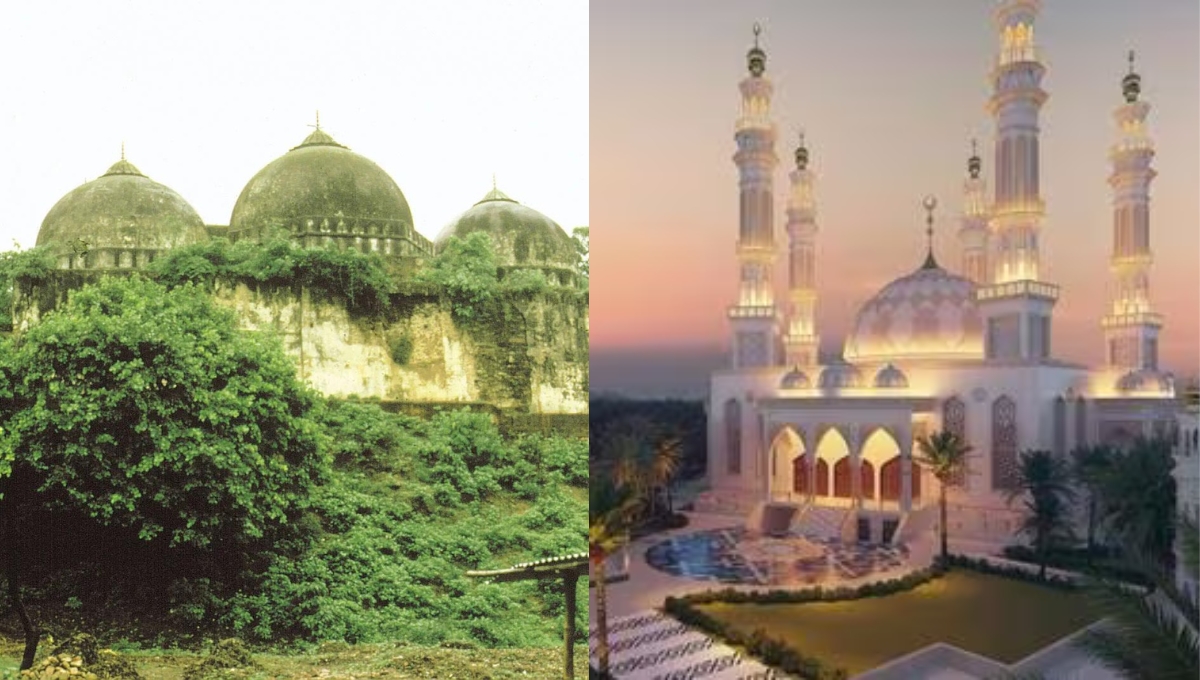In a significant move towards interfaith harmony, the Ayodhya’s Dhannipur village set to house grand Mosque named after Prophet Muhammad. Mosque will be named as “Mohammed Bin Abdullah Masjid”. This development comes as part of the Supreme Court’s directives from the 2019 Ram Janmabhoomi-Babri Masjid title verdict, which also paved the way for the construction of a Ram Temple in Ayodhya.
Key Specifications & Features:
- Name: The All India Rabta-e-Masjid, an organization representing mosques across India, announced that the mosque would bear the name of Prophet Muhammad, specifically “Mohammed Bin Abdullah Masjid”.
- Location: The mosque is to be situated about 22 km from the original site of the historic Babri Masjid, which was razed on December 6, 1992.
- Design & Architecture: Taking inspiration from ancient Islamic artistry, the mosque’s blueprint will resemble traditional architectural styles prevalent in the Middle East. This grand design shift, overseen by Pune-based architect Imran Sheikh, departs from the initially intended style that echoed mosques in India.
- Capacity: Once completed, the mosque will accommodate over 5,000 worshippers, with a special section dedicated to 4,000 women.
- Community Involvement: Clerics from different Islamic sects, including Sunni, Shia, Barelvi, and Deobandi, converged to finalize this monumental design. Additionally, the construction will see participation from individuals of all castes and religions, emphasizing unity and collaboration.
- Associated Projects: Beyond a place of worship, the Dhannipur mosque site will feature various community-centered facilities. A 300-bed charitable cancer hospital is planned, with Dr. Habil Khorakiwala, chairman of the pharma company Wockhardt Group, committed to establishing and operating this charitable venture. Moreover, proposals are in place for a women’s college and a library to foster education and learning.
- Fund Collection: An ambitious goal has been set to amass over ₹300 crore to finance the mosque and its associated facilities. As funds materialize, construction is set to commence, promising a landmark that stands testament to India’s diverse and harmonious fabric.
As the Dhannipur mosque takes shape, it symbolizes not just a place for prayer, but a beacon of hope and unity, reflecting India’s rich tapestry of cultures, faiths, and histories.

